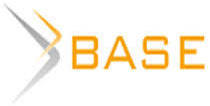DOI:
10.18413 /2408-932X-2014-1-2-71-77
The study is aimed at clarifying the theoretical and methodological originality of the organic approach, as it first appeared in the natural science work of an outstanding Russian scientist and philosopher N. N. Strakhov. The methodological work is done in the form of historical and scholarly commentary on Strakhov's thesis research which embraces the explications of the basic metatheoretical ideas, assumptions and effects of his work within the framework of the world science.
As a result, there have been found certain evolutionary and in-system natural and historical categorizations and reasoning which show the advanced theoretical and methodological views of a zoologist N. N. Strakhov. The outputs of the study may be useful in further historical, scientific, biographical, methodological systematic descriptions and for classification of achievements of national science, as well as for creating the scientific biography of N. N. Strakhov.
Of paramount importance is the fact that N. Strakhov came to a conclusion about the genetic relationships between the groups of vertebrates and the conclusions of a particular evolutionary order which were hinged on his comparative anatomical studies. His thesis was one of the first theoretical works in the field of domestic animal morphology, where a combination of organic teleology (the idea) and the implication of mathematical methods for empirical data processing provide a basis for the effectiveness of cognitive scientific principle of homology. Strakhov’s research into animal morphology, his studies of the homological principles of kinship groups was a hundred years ahead of the concept of homology proposed by Adolf Remane, German biologist.
Keywords: Nikolai N. Strakhov,
morphological studies,
the principle of homology,
teleology,
"Life force",
morphogenesis,
evolution,
R. Owen,
A. Remane.
Number of views: 5739 (view statistics)
Количество скачиваний: 9577
All journals
Send article
Research Result. Social Studies and Humanities is included in the scientific database of the RINTs (license agreement No. 765-12/2014 dated 08.12.2014).
The journal is included in the list of peer-reviewed scientific publications recommended by the Higher Attestation Commission (as of 25.12.2020 (№ 1590)). vak.minobrnauki.gov.ru

















While nobody left any comments to this publication.
You can be first.